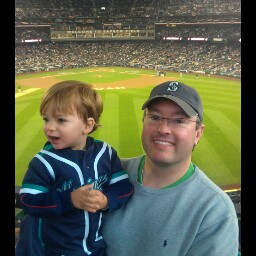Jeffrey A Sutherland
age ~43
from Detroit, MI
- Also known as:
-
- Jeff A Sutherland
- Sareta Veren
- Jeff Suthurland
Jeffrey Sutherland Phones & Addresses
- Detroit, MI
- Kirkland, WA
- Woodinville, WA
- Renton, WA
- Medina, WA
- Kiona, WA
Work
-
Company:Jeffrey H. Sutherland, P.C.
-
Address:
Specialities
Estate Law • Guardianship Law • Real Estate • Property Rights • Easement Law • Business Law • Personal Injury
Name / Title
Company / Classification
Phones & Addresses
F.O.M. SYSTEMS, INC
Resumes
Isbn (Books And Publications)

Business Object Design and Implementation: OOPSLA '95 Workshop Proceedings
view sourceAuthor
Jeffrey V. Sutherland
ISBN #
3540760962
Lawyers & Attorneys

Jeffrey Sutherland - Lawyer
view sourceOffice:
Jeffrey H. Sutherland, P.C.
Specialties:
Estate Law
Guardianship Law
Real Estate
Property Rights
Easement Law
Business Law
Personal Injury
Guardianship Law
Real Estate
Property Rights
Easement Law
Business Law
Personal Injury
ISLN:
903305752
Admitted:
1989
University:
Bloomsburg University, B.S., 1986
Law School:
Widener University, J.D.
Us Patents
-
Object-Based Computer System Management
view source -
US Patent:7870564, Jan 11, 2011
-
Filed:Feb 16, 2006
-
Appl. No.:11/355506
-
Inventors:Bruce W. Copeland - Redmond WA, US
David C. James - Bothell WA, US
Donald Y. Song - Redmond WA, US
Dustin M. Ingalls - Sammamish WA, US
Jeffrey A. Sutherland - Seattle WA, US
Jeffry B. Phillips - Seattle WA, US
Joseph S. Calabig - Sammamish WA, US
Khuzaima Iqbal - Redmond WA, US
Michael J. Healy - Redmond WA, US
Rajagopalan Badri Narayanan - Redmond WA, US
Zhengkai Kenneth Pan - Redmond WA, US -
Assignee:Microsoft Corporation - Redmond WA
-
International Classification:G06F 13/00
-
US Classification:719316, 719310, 719313, 719315, 709223
-
Abstract:A method, system, and architecture for managing computer systems is provided. A management system employs management objects (MOs) to provide administrators the ability to intuitively express the administrative intent in an information technology (IT) environment, and to act out the administrative intent based on the information gathered by the management system. Managed elements of an IT environment, such as, by way of example, hardware components, software applications, software updates, software distribution policies, configurations, settings, etc. , may be expressed as MOs. Actions, such as, by way of example, detect, install/apply, remove, remediate, enumerate, etc. , may be associated with the MOs. The management system manages the computer systems by deploying the appropriate MOs and their associated actions onto the computer systems, and performing the actions on the computer systems.
-
Object-Based Computer System Management
view source -
US Patent:20110099247, Apr 28, 2011
-
Filed:Jan 5, 2011
-
Appl. No.:12/985260
-
Inventors:Bruce W. Copeland - Redmond WA, US
David C. James - Bothell WA, US
Donald Y. Song - Redmond WA, US
Dustin M. Ingalls - Sammamish WA, US
Jeffrey A. Sutherland - Seattle WA, US
Jeffry B. Phillips - Seattle WA, US
Joseph S. Calabig - Sammamish WA, US
Khuzaima Iqbal - Redmond WA, US
Michael J. Healy - Redmond WA, US
Rajagopalan Badri Narayanan - Redmond WA, US
Zhengkai Kenneth Pan - Redmond WA, US -
Assignee:Microsoft Corporation - Redmond WA
-
International Classification:G06F 9/46
G06F 15/16 -
US Classification:709217, 718100
-
Abstract:A method, system, and architecture for managing computer systems is provided. A management system employs management objects (MOs) to provide administrators the ability to intuitively express the administrative intent in an information technology (IT) environment, and to act out the administrative intent based on the information gathered by the management system. Managed elements of an IT environment, such as, by way of example, hardware components, software applications, software updates, software distribution policies, configurations, settings, etc., may be expressed as MOs. Actions, such as, by way of example, detect, install/apply, remove, remediate, enumerate, etc., may be associated with the MOs. The management system manages the computer systems by deploying the appropriate MOs and their associated actions onto the computer systems, and performing the actions on the computer systems.
-
Block Device Signature-Based Integrity Protection For Containerized Applications
view source -
US Patent:20210133313, May 6, 2021
-
Filed:Oct 31, 2019
-
Appl. No.:16/671064
-
Inventors:- Redmond WA, US
Jeffrey A. Sutherland - Seattle WA, US
Deven Robert Desai - Bellevue WA, US
Jaskaran Singh Khurana - Bellevue CA, US
Scott Randall Shell - Bellevue WA, US
Jessica M. Krynitsky - Manassas VA, US -
International Classification:G06F 21/52
G06F 21/51 -
Abstract:Integrity verification of a containerized application using a block device signature is described. For example, a container deployed to a host system is signed with a single block device signature. The operating system of the host system implements an integrity policy to verify the integrity of the container when the container is loaded into memory and when its program code executes. During such events, the operating system verifies whether the block device signature is valid. If the block device signature is determined to be valid, the operating system enables the program code to successfully execute. Otherwise, the program code is prevented from being executed. By doing so, certain program code or processes that are not properly signed are prevented from executing, thereby protecting the host system from such processes. Moreover, by using a single block device signature for a container, the enforcement of the integrity policy is greatly simplified.
-
Optimized Telemetry-Generated Application-Execution Policies Based On Interaction Data
view source -
US Patent:20200274939, Aug 27, 2020
-
Filed:Feb 26, 2019
-
Appl. No.:16/286299
-
Inventors:- Redmond WA, US
Isha Aniruddha OKE - Bellevue WA, US
Scott Randall SHELL - Kirkland WA, US
Jeffrey Alan SUTHERLAND - Seattle WA, US
Jaskaran Singh KHURANA - Bellevue WA, US
Zhouheng SUN - Los Angeles CA, US
Noah McGregor HARPER - Cartersville GA, US -
International Classification:H04L 29/08
G06F 11/34 -
Abstract:The present disclosure concerns systems and methods for generating application-control policies. A system may receive application-usage data for a set of devices. The application-usage data may identify binaries with which a user interacted. The system may determine one or more application-usage characteristics for one or more devices in the set of devices based at least in part on the application-usage data and may rely solely on data associated with the binaries with which the user interacted. The system may identify a set of candidate devices based on the one or more application-usage characteristics. The application-usage characteristics may include a measure of distinct applications used during a specified time period and a measure of variability of application usage across a set of specified time periods. The system may generate an application-control policy for the set of candidate devices based on application-usage data for the set of candidate devices.
-
Binary Authorization Based On Both File And Package Attributes
view source -
US Patent:20190171809, Jun 6, 2019
-
Filed:Dec 4, 2017
-
Appl. No.:15/831006
-
Inventors:- Redmond WA, US
Jeffrey SUTHERLAND - Seattle WA, US
Deskin MILLER - Redmond WA, US
Scott ANDERSON - Seattle WA, US
Deepak Jagannathan MANOHAR - Redmond WA, US
Adrian MARINESCU - Sammamish WA, US -
International Classification:G06F 21/51
G06F 21/56 -
Abstract:Examples described herein generally relate to a computer device including a memory, and at least one processor configured to determine whether to allow execution of an application file on the computer device. The processor receives a command to execute a file. The processor determines whether the file is associated with a package reputation of an installation package. The processor determines a file reputation of the file. The processor determines whether to allow execution of the file based on a combination of the file reputation of the file and whether the file is associated with the good package reputation.
-
Locating System For Vehicle Load Floor Panel Measurement
view source -
US Patent:20180099616, Apr 12, 2018
-
Filed:Oct 12, 2016
-
Appl. No.:15/291171
-
Inventors:Jacob Wright - Rochester Hills MI, US
Eric Clara - Algonac MI, US
Nicholas D Kappler - Waterford MI, US
Jeffrey D Sutherland - Ortonville MI, US
Eric A Marsh - Macomb MI, US
John H Pray - Shelby Township MI, US
Joseph J Swailes - Oxford MI, US
Kazimiera Borek - Macomb MI, US -
International Classification:B60R 5/04
B62D 25/20
B32B 37/10
B32B 27/40
B29C 43/20
B29C 45/14 -
Abstract:A compression molded vehicle floor panel includes a main body formed by compression molding and having a first side and an opposed second side, and at least one separately formed measurement locating member at least partially encapsulated in the main body during the compression molding. The measurement locating member defines a cavity having an open end at the first side of the main body. The cavity is configured to receive a locator pin of a measurement fixture to locate the compression molded vehicle floor panel in the measurement fixture for measurement of the compression molded vehicle floor panel.
-
Propagating Origin Information For Applications During Application Installation
view source -
US Patent:20180103097, Apr 12, 2018
-
Filed:Oct 7, 2016
-
Appl. No.:15/288586
-
Inventors:- Redmond WA, US
Kinshumann Kinshumann - Redmond WA, US
Thomas W. Caldwell - Bellevue WA, US
Jeffrey A. Sutherland - Seattle WA, US
Jeffrey R. McKune - Sammamish WA, US
Deskin M. Miller - Redmond WA, US
Scott D. Anderson - Seattle WA, US -
Assignee:Microsoft Technology Licensing, LLC - Redmond WA
-
International Classification:H04L 29/08
H04L 29/06 -
Abstract:An application is installed on a computing device from an application package. An origin of the application (e.g., a managed installer for an enterprise, a reputation checking service) is propagated to files written to a storage device of the computing device as part of the installation, such as by writing origin information to the storage device as metadata associated with the file. The origin information for a file, in conjunction with a policy on the computing device specifying one or more trusted origins for applications on the computing device, is used to identify whether a particular action can be taken with and/or by the file. These actions can include, for example, execution of an application from an executable file. If the origin information for a file indicates an origin that is a trusted origin specified by the policy, then the action can be performed.
-
Limiting Enterprise Applications And Settings On Devices
view source -
US Patent:20160300055, Oct 13, 2016
-
Filed:Jan 25, 2016
-
Appl. No.:15/005257
-
Inventors:- Redmondd WA, US
Michael Healy - Duvall WA, US
Brett D.A. Flegg - Redmond WA, US
Gaurav Dhawan - Seattle WA, US
Jeffrey Sutherland - Seattle WA, US -
International Classification:G06F 21/51
G06F 21/62 -
Abstract:Registering a computer system for use in an enterprise. A method includes receiving, from a device management infrastructure of the enterprise, an executable system management component (SMC), and installing the SMC at a storage device. The method also includes executing the SMC, causing the computer system to register with the device management infrastructure, including applying a device settings policy to a configuration of the computer system. Executing the SMC also causes the computer system to configure itself to periodically execute a maintenance task received from the device management infrastructure. The method also includes periodically executing the maintenance task, causing the computer system to receive updated device settings policies from the device management infrastructure and apply the updated device settings policies to the configuration of the computer system, and to receive an updated application from the device management infrastructure and install the updated application at the computer system.
Plaxo

Jeffrey Sutherland
view sourceMicrosoft
News

Microsoft offers details on managing BYO devices running Windows RT
view source- In an official blog post on the Building Windows 8 blog, Jeffrey Sutherland, a program manager lead, says: "For WOA, we have integrated a new management client that can communicate with a management infrastructure in the cloud to deliver LOB apps to users." (LOB stands for line-of-business. "Line-of
- Date: Apr 19, 2012
- Category: Sci/Tech
- Source: Google
Flickr
Myspace
Googleplus

Jeffrey Sutherland
Lived:
Bellevue, WA
Seattle, WA
Seattle, WA

Jeffrey Sutherland

Jeffrey Sutherland
Classmates

Jeffrey Sutherland
view sourceSchools:
St. Jago High School Kingston MO 1993-2001
Community:
Delroy Allen, Beverly Budd, Debbie Brissett

Jeffrey Sutherland
view sourceSchools:
Sherbrooke School Thunder Bay Morocco 1992-1996
Community:
Steph Hauth, Julia Grau, Ray Seguin, Roman Singleton, Amanda Mather

Jeffrey Sutherland | Sout...
view source
St. Jago High School, Kin...
view sourceGraduates:
Jeffrey Sutherland (1993-2000),
Andrew Tucker (1994-1999),
Bernadette Fraser (1997-2002),
Wilton Rhoden (1982-1987)
Andrew Tucker (1994-1999),
Bernadette Fraser (1997-2002),
Wilton Rhoden (1982-1987)

Sherbrooke School, Thunde...
view sourceGraduates:
Richard Walker (1979-1983),
Roderick Lyght (1986-1990),
Jeffrey Sutherland (1992-1996),
Samantha Potter (2002-2006)
Roderick Lyght (1986-1990),
Jeffrey Sutherland (1992-1996),
Samantha Potter (2002-2006)

Bremerton Middle School, ...
view sourceGraduates:
Jerime Dehuff (1987-1989),
Hannah Frederick (1989-1991),
Christopher Petty (1987-1989),
Donald Wang (1993-1997),
Jeffery Sutherland (1999-2001)
Hannah Frederick (1989-1991),
Christopher Petty (1987-1989),
Donald Wang (1993-1997),
Jeffery Sutherland (1999-2001)

Walter T. Helms Junior Hi...
view sourceGraduates:
Silvia Villanueva (2002-2006),
Connie Cleveland Polega (1963-1966),
Jeffrey Sutherland (1967-1971),
Tymekia Spellman (1985-1989)
Connie Cleveland Polega (1963-1966),
Jeffrey Sutherland (1967-1971),
Tymekia Spellman (1985-1989)
Youtube

Jeffrey Sutherland
view source
Jeffrey Red Sutherland
view source
Jeffrey Sutherland
view source
Jeffrey Sutherland
view source
Jeffrey Sutherland
view source
Jeffrey Sutherland
view source
Jeffrey Sutherland
view source
Jeffrey Wayne Sutherland
view sourceGet Report for Jeffrey A Sutherland from Detroit, MI, age ~43

















